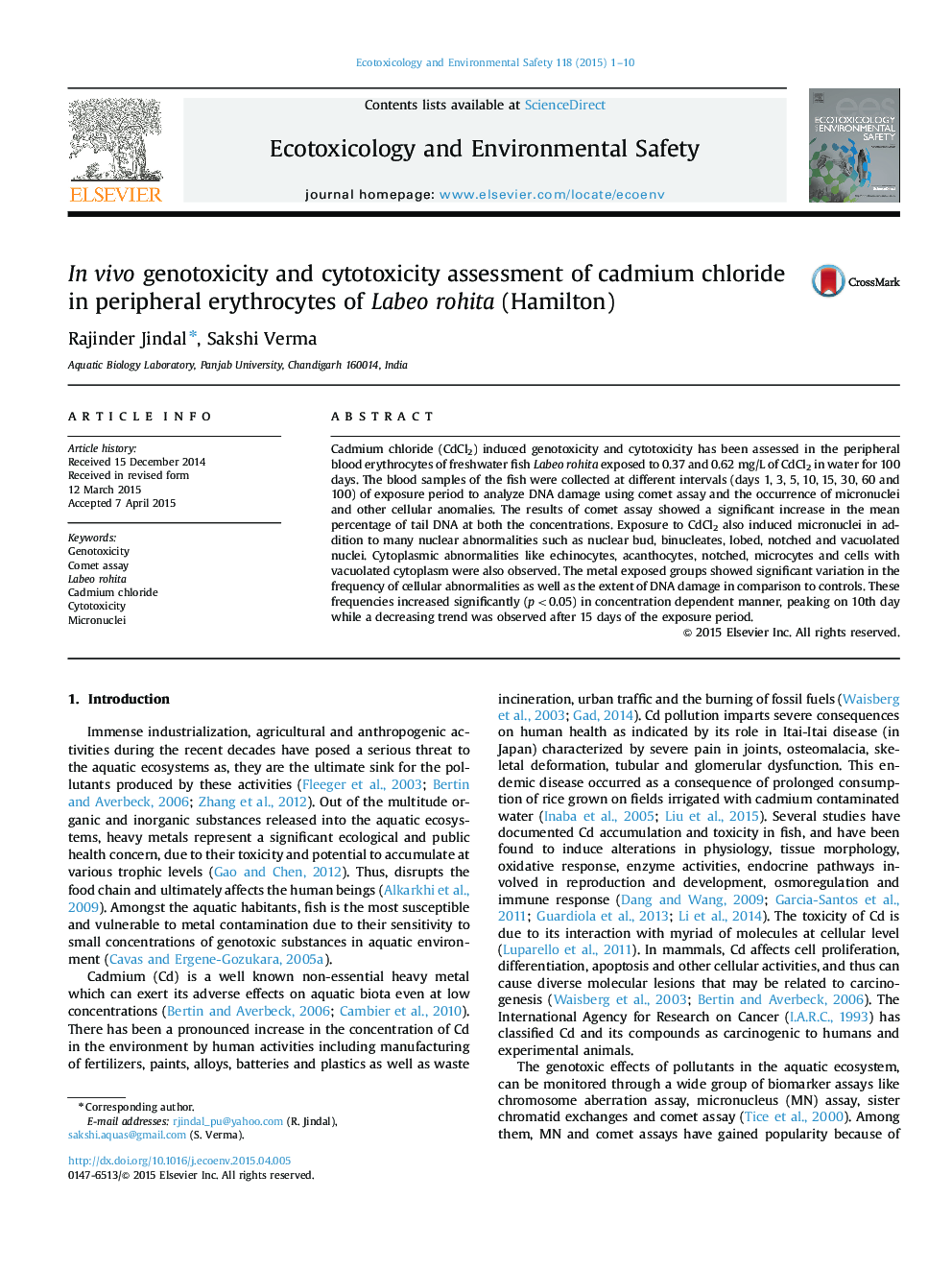| Article ID | Journal | Published Year | Pages | File Type |
|---|---|---|---|---|
| 6312087 | Ecotoxicology and Environmental Safety | 2015 | 10 Pages |
Abstract
Cadmium chloride (CdCl2) induced genotoxicity and cytotoxicity has been assessed in the peripheral blood erythrocytes of freshwater fish Labeo rohita exposed to 0.37 and 0.62Â mg/L of CdCl2 in water for 100 days. The blood samples of the fish were collected at different intervals (days 1, 3, 5, 10, 15, 30, 60 and 100) of exposure period to analyze DNA damage using comet assay and the occurrence of micronuclei and other cellular anomalies. The results of comet assay showed a significant increase in the mean percentage of tail DNA at both the concentrations. Exposure to CdCl2 also induced micronuclei in addition to many nuclear abnormalities such as nuclear bud, binucleates, lobed, notched and vacuolated nuclei. Cytoplasmic abnormalities like echinocytes, acanthocytes, notched, microcytes and cells with vacuolated cytoplasm were also observed. The metal exposed groups showed significant variation in the frequency of cellular abnormalities as well as the extent of DNA damage in comparison to controls. These frequencies increased significantly (p<0.05) in concentration dependent manner, peaking on 10th day while a decreasing trend was observed after 15 days of the exposure period.
Related Topics
Life Sciences
Environmental Science
Environmental Chemistry
Authors
Rajinder Jindal, Sakshi Verma,
